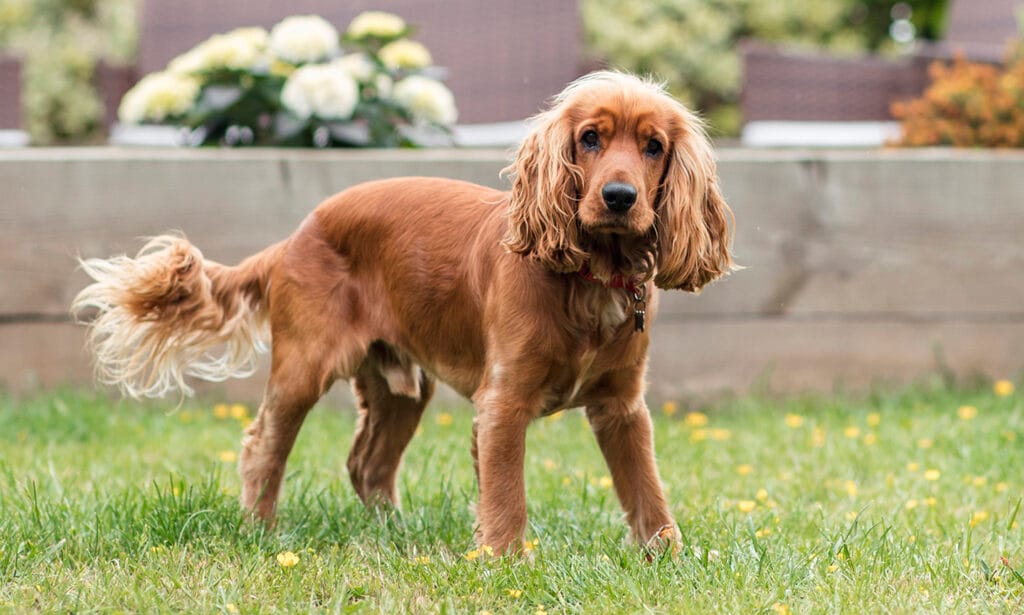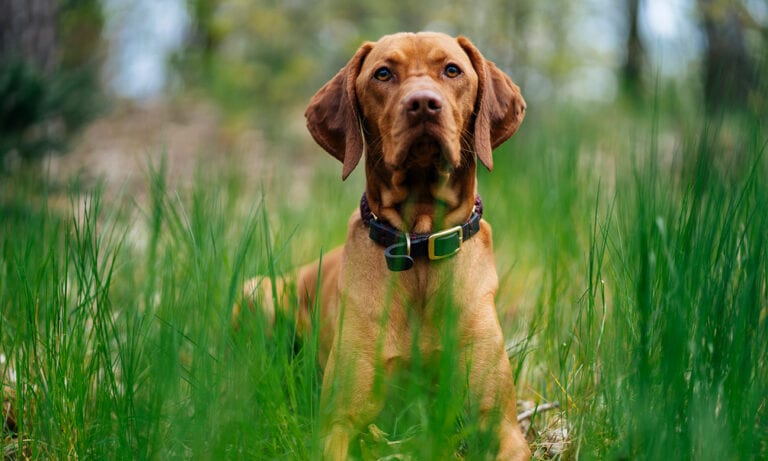Dog constipation might not be the most glamorous topic, but it’s one that every dog parent should know how to handle.
When your pup is struggling to do their business, it’s a sign that something’s not quite right. A backed-up pup isn’t just uncomfortable—chronic dog constipation can signal underlying health issues. Plus, it can lead to bigger problems if left untreated.
Here's everything you need to know about the telltale signs of dog constipation, common causes, and simple solutions to get things moving again.
In This Guide:
What Is Dog Constipation? What Causes It?
Dog constipation is when your pup has trouble going to the bathroom. This might mean your dog can’t pass stool, they strain to go to the bathroom, and/or they pass hard, dry stools.
Normal dog poop is chocolate brown and comes out easily in solid, log-like pieces. If your dog is passing stool that looks like little pebbles, they’re likely constipated.
If constipation is a repeated occurrence, schedule your dog for a vet checkup so you can get to the bottom of what’s causing it.
Some of the most common causes of constipation include:
- Not enough fiber in the diet
- Dehydration or not drinking enough water
- Eating things they shouldn't
- Intestinal blockage
- Anal gland issues, problems, or even disease
- Hypothyroidism (an underactive thyroid)
- Megacolon (a larger-than-normal colon)
- Enlarged prostate gland
- Side effects of certain medications, like pain relievers or diuretics
- Arthritis or joint issues
- Trauma
- Lack of exercise
- Growths/masses in the colon/rectum
- Neurological issues
OK, So What Are the Signs of Constipation in Dogs?
The most obvious sign of constipation is your dog pooping less often, but you may notice other changes in your dog’s behavior too.
Some of the most common dog constipation symptoms are:
- Small stools
- Dry, hard stools
- Straining to have a bowel movement
- Abdominal bloating
- Abdominal discomfort
- Small amounts of blood in the stool
- Reduced or loss of appetite
- Lack of energy
- Weakness
Call your veterinarian immediately if your dog doesn’t poop for two to three days or if they experience the following symptoms, which could be considered a medical emergency:
- Vomiting
- Pain
- Not eating
- Not drinking water
- Lethargic
It's Official, My Dog Is Constipated. What Do I Do?
Now that you’ve confirmed your dog is, in fact, having bowel troubles, what can you give a dog for constipation?
First, it’s always a good idea to check in with your vet to give them details about what’s going on. They may recommend you bring your dog in for a visit or suggest at-home remedies you can try to get things moving.
If that’s not successful, you may have to get some help from your veterinarian.
Home Remedies for Dog Constipation
If your vet gives you the go-ahead to try to alleviate constipation at home, here’s how to help a constipated dog, based on advice from Andrea Johnson, DVM, board-certified small animal veterinary internist and co-founder of PetVet365, in Lexington, Kentucky:
- Make sure they’re hydrated. Sometimes constipation is a result of dehydration. Offer your dog some fresh water to see if you can get them to drink. A water fountain, like the Petlibro Capsule Ultra-Quiet Water Fountain, may get them interested in drinking more.
- Swap to a high-fiber food. It’s possible your dog isn’t getting enough fiber from their current food, especially if it’s kibble. Try switching to a high-fiber dog food, like Hill's Science Diet Adult Perfect Weight, to see if it helps.
- Add fiber in other ways. If swapping out your dog’s food isn’t an option, you can mix some high-fiber food, like Nummy Tum-Tum's Organic Pumpkin, into their regular food. You can also opt for fiber supplements, like Vetnique Labs Glandex Anal Gland Support. If you go the supplement route, make sure your dog is still getting a balanced diet.
- Give them more exercise. A daily 15- to 30-minute walk is an excellent way to stimulate a bowel movement (for you too!). It can also help reduce bloating, which often accompanies constipation. Make sure your dog is hydrated before heading out—and provide plenty of water when they get back!
- Add some probiotics. If your dog’s constipation is the result of an imbalanced gut, probiotics may help. Probiotics aren’t quick-acting, but over time, they can balance the gut microbiota, which can alleviate constipation and make your dog’s digestion healthier overall.
- Ask your vet about stool softener. Stool softeners, like NaturVet’s Stool Ease, make your dog’s stool easier to pass by increasing the amount of water and fats the stool absorbs. They’re not a laxative, meaning they don’t trigger an immediate bowel movement, but they can reduce strain and help get things moving. Do not give your dog a stool softener without a vet’s approval.
Talk to your vet before switching your dog’s food or giving your dog any new supplements.
Vet Treatments for Dog Constipation
If it’s been more than two days since your dog has had a bowel movement, or you notice your dog is straining a lot and/or only passes very hard, small stools, it’s a good idea to visit your vet, says Christine Walters, DVM, head veterinarian at PetWellClinic in South Florida.
Your vet can run a series of tests to diagnose the underlying cause of the constipation. They can also recommend dog constipation treatment that provides more-immediate relief, such as laxatives, which require a prescription; or an enema, in severe cases.
How Can I Prevent Constipation in My Pup?
The best way to combat constipation is to prevent it before it starts, according to Dr. Walters.
While there isn’t a foolproof way to do this—meaning your dog may still experience some constipation from time to time—here are some things you can do to support your dog’s digestive system in the long-term:
- Make sure your dog is eating a well-balanced diet with all the recommended nutrients. If you rely on kibble, you may want to add in some high-fiber wet food, like Hill's Science Diet Adult Perfect Weight, which is more hydrating.
- Add fiber supplements or high-fiber foods, like canned pumpkin, to your dog’s diet. Some supplements, like the PetHonesty High-Fiber Pumpkin-Flavored Digestive Powder, can be mixed right into your dog’s food. You can also give them high-fiber treats, like the Happy Olly Freeze-Dried Pumpkin Treats.
- Take your dog on regular walks. Aim for 20–30 minutes a day, if possible. Split the walk into multiple walks a day and work your way up to 30 minutes if your dog has never walked this much.
- Keep your dog away from indigestible objects, like plants, grass, and dirt. These can disrupt your dog’s digestive system and make it harder for them to poop.
FAQs About Dog Constipation
Q:How do you make a constipated dog poop quickly?
A:Dr. Walters says there are no quick fixes. Instead, walk your dog, encourage them to drink more water, and work with your vet to supplement your pup’s diet with fiber.
Q:What can I give a dog for constipation?
A:Fiber, water, probiotics, and stool softeners are all things that can help with constipation. They might not be an overnight fix, but over time, they can make it easier to pass stools.
If your dog is really backed up, your vet may prescribe a laxative to move things along more quickly.
This content was medically reviewed by Jo Cornett, DVM, Chewy veterinarian.
Share:
















